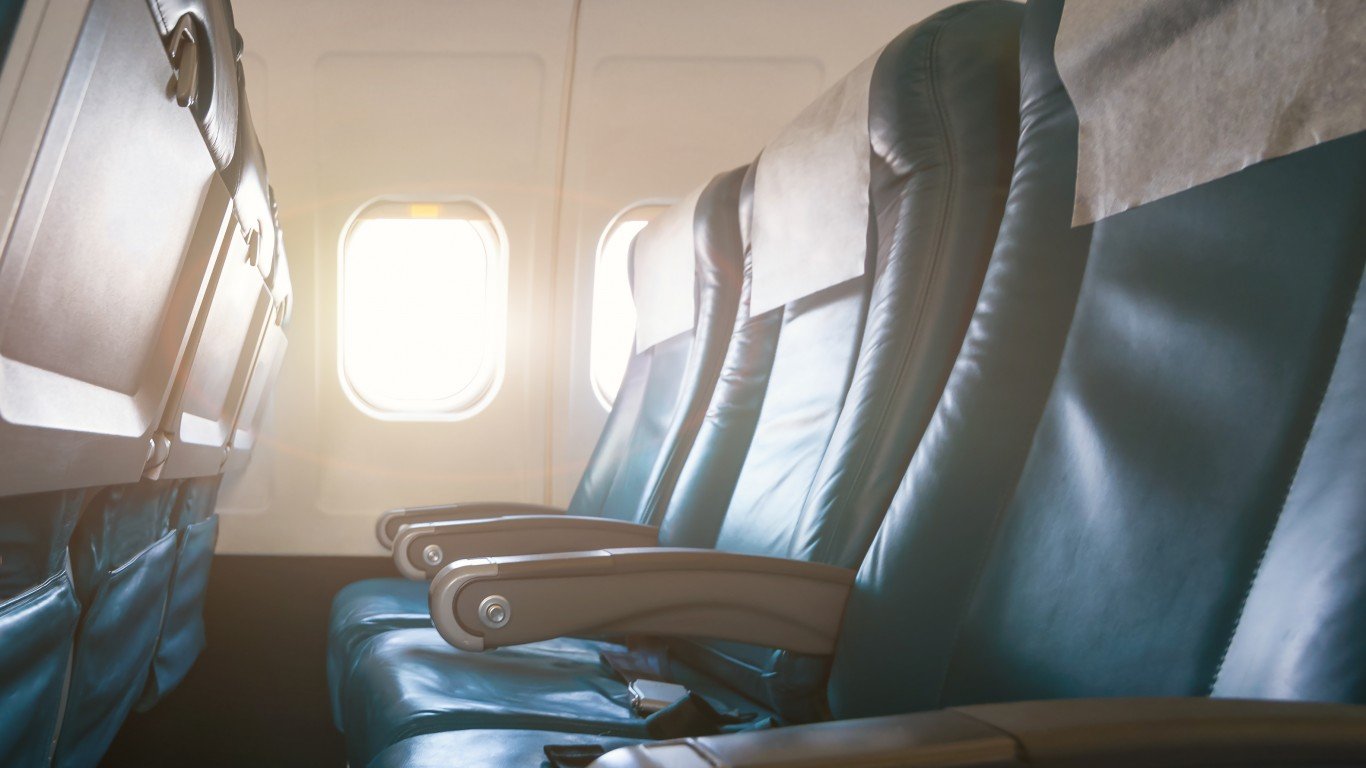

Global air passenger demand has continued to rise despite the softer economic growth story around the globe. That’s the good news. The bad news is that the air passenger demand growth is below its average, and it has now been subpar for eight consecutive months. Airline traffic and passenger demand are used by some investors and economists as a measurement of underlying economic strength. After all, if people and things aren’t being flown around, how strong can the economy be?
The International Air Transport Association (IATA) released its global passenger traffic results for September 2019 late on Thursday showing that air passenger demand rose by 3.8% from September of 2018. The figure is measured in revenue passenger kilometers, and IATA showed that September was broadly unchanged from August’s performance.
At the same time, capacity increased by 3.3% in September, and the airline load factor rose by 0.4 percentage point to a monthly September record of 81.9%.
IATA knows a thing or two about global air traffic and other travel issues. After all, it represents some 290 airlines that account for about 82% of global air traffic. IATA’s statement discussed the ongoing trade issues as a drag on the sector and cautioned that airline demand trends might not be facing any major snapback recovery immediately. The report said:
These are challenging days for the global air transport industry. Pressure is coming from many directions. In a matter of weeks, four airlines in Europe went bust. Trade tensions are high and world trade is declining. The IMF recently revised down its GDP growth forecasts for 2019 to 3.0%. If correct, this would be the weakest outcome since 2009, when the world was still struggling with the Global Financial Crisis.
Those who look at airline trends for trade and economic data might take issue that September marked the eighth consecutive month of below-average demand growth. The issues affecting growth are probably what you may have expected: declining world trade activity; tariffs; rising political and geopolitical tensions; and a slowing global economy. IATA’s view is that it is difficult to see the slower growth trend reversing in the near term.
There is an airline ETF and a broader transportation ETF that includes airlines that are in the ETFdb.com search group. Most of the major U.S. carriers are still considerably lower than their prior highs, despite the stock market reaching all-time highs this week.
The U.S. Global Jets ETF (NYSEARCA: JETS) was last seen at $32.00, in a 52-week range of $26.46 to $33.06. Unfortunately, that has barely $50 million in assets under management.
iShares Transportation Average ETF (NYSEARCA: IYT) includes airlines in its holdings, but it also includes shippers, freight and trucking companies in the mix and is a broader theme with more than $550 million in assets under management. At $198.63 a share, it has a 52-week range of $153.65 to $201.48.
As for North America, the revenue per kilometer (or miles here) measurement was up 5.1% and the load factor was 82.8%. IATA’s report on North American traffic trends and U.S. trends said:
North American carriers’ international demand climbed 4.3% compared to September 2018, well up from the 2.9% growth recorded in August and the strongest performance among the regions. Capacity rose 1.6%, and load factor accelerated 2.2 percentage points to 83.0%. Demand is being supported by solid consumer spending and continued job creation. … US airlines’ domestic traffic surged 6.0% in September compared to September 2018, up from 3.9% growth in August year over year. As with Japan, the performance is somewhat exaggerated owing to the softer demand environment experienced in 2018. Nevertheless, the demand environment is robust.
The picture is mixed globally:
- Asia-Pacific airlines saw September traffic increase 3.6% from a year earlier, an increase over the 3.3% annual growth recorded in August.
- European carriers experienced a 2.9% rise in September’s traffic, which was its weakest performance of 2019 and a decline from the 4.2% year-over-year rise recorded in August.
- Middle Eastern airlines showed a 1.8% traffic increase in September, down from a 2.9% rise in August.
- Latin American airlines had a 1.2% demand increase in September from a year earlier, down from 2.3% growth in August.
- African airlines’ traffic climbed 0.9% in September, down from 4.1% growth in August.
As for the Asia-Pacific region, this dominates with 34.5% of the world market share. That is over 1.5 times the 22.3% of global demand from North America. Of the Asia-Pacific regional increase, IATA did note some caution in the report:
Despite the uptick, growth remains well below that seen in 2018. This is occurring amid a weaker economic backdrop in some of the region’s key states as well as trade tensions between the US and China and, more recently, between Japan and South Korea. Political unrest in Hong Kong has also contributed to subdued regional demand and led to sharp capacity cuts to/from the hub. Capacity rose 5.0% and load factor slid 1.1 percentage points to 78.2%.
Thank you for reading! Have some feedback for us?
Contact the 24/7 Wall St. editorial team.
 24/7 Wall St.
24/7 Wall St.


